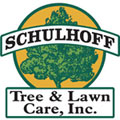You love the beautiful trees in your yard, and you assume they’ll be there forever. But did you stop to think about the fact that like any living thing, trees are born, grow, and die?
Exploring each stage of a tree’s lifecycle can help you better understand how to care for your tree and promote a long, healthy life.
Stage One: Seed
Every tree starts out as a seed. But to become a tree, a seed needs the right conditions: enough warmth from the sun, adequate water, and nutrient-packed soil. Without these conditions, the seed cannot take root and begin to grow.
When you first plant your tree seed, consult with a professional arborist. This expert can advise you on the ideal location to plant the seed, where the tree will have the best chance of growth. The arborist can also help that growth along by adding organic matter and nutrients to your soil. He or she can also advise you on how to care for your seed.
Stage Two: Seedling
With the right conditions and care, your seed grows into a seedling. As a seedling, it exhibits the main characteristics of a tree, including a stem, roots, branches, and even needles or leaves.
This stage is a vulnerable time for the growing tree. Insects, animals, fire, and disease can attack the tree and cause it to die. Getting basic necessities like water can help protect it from these attacks.
Rain and sun can provide some of the water and light for your seedling, but Colorado’s frequent drought conditions may prevent your seedling from getting what it needs. To keep your seedling living and thriving, water it every day during its first two years.
Overwatering can be dangerous, so consult with an arborist to find out how much water your seedling needs. Water the seedling for about thirty seconds, then put a garden trowel about two inches into the ground and feel the soil with your fingers. It should be damp, but not soggy. If it feels soggy, you’re probably watering too much.
Stage Three: Sapling
When your tree reaches about four and a half feet tall and at least one inch in diameter, it has become a sapling. A sapling cannot yet produce seeds of its own. When they want to grow a tree in their yard, many people skip the seed and seedling phases and purchase saplings from arborists.
Just as it was as a seed and seedling, the sapling is vulnerable to outside conditions. Ask an arborist about injections that can help your saplings. These injections include:
- Growth regulators that promote healthy growth
- Fungicides that keep damaging fungus away
- Insecticides that kill harmful insects
The arborist can also address any nutritional deficiencies in the soil by adding needed nutrients.
Stage Four: Tree
When the sapling becomes a fully grown tree, it can now produce seeds of its own. To protect the seeds, fruit trees grow fruit and pine trees grow pinecones.
When your tree reaches the adult stage, it provides the most benefit to you. It helps clean the air, shades your home and yard, and adds beauty to your landscape. However, adult trees are still vulnerable to attacks from insects, fungus, and other threats.
In Colorado, one of the biggest threats to your trees is an insect called the emerald ash borer. Talk to an arborist about protecting your trees, especially if you see holes in the trunk, dead branches, and thinning foliage.
If they can stay healthy, trees can live for many years. In fact, the oldest living tree is more than
5,000 years old.
If you hope to grow a tree that beautifies your property for many years, you need to care for it during each stage of its life. Talk to a professional arborist about ideas to protect your growing tree.
